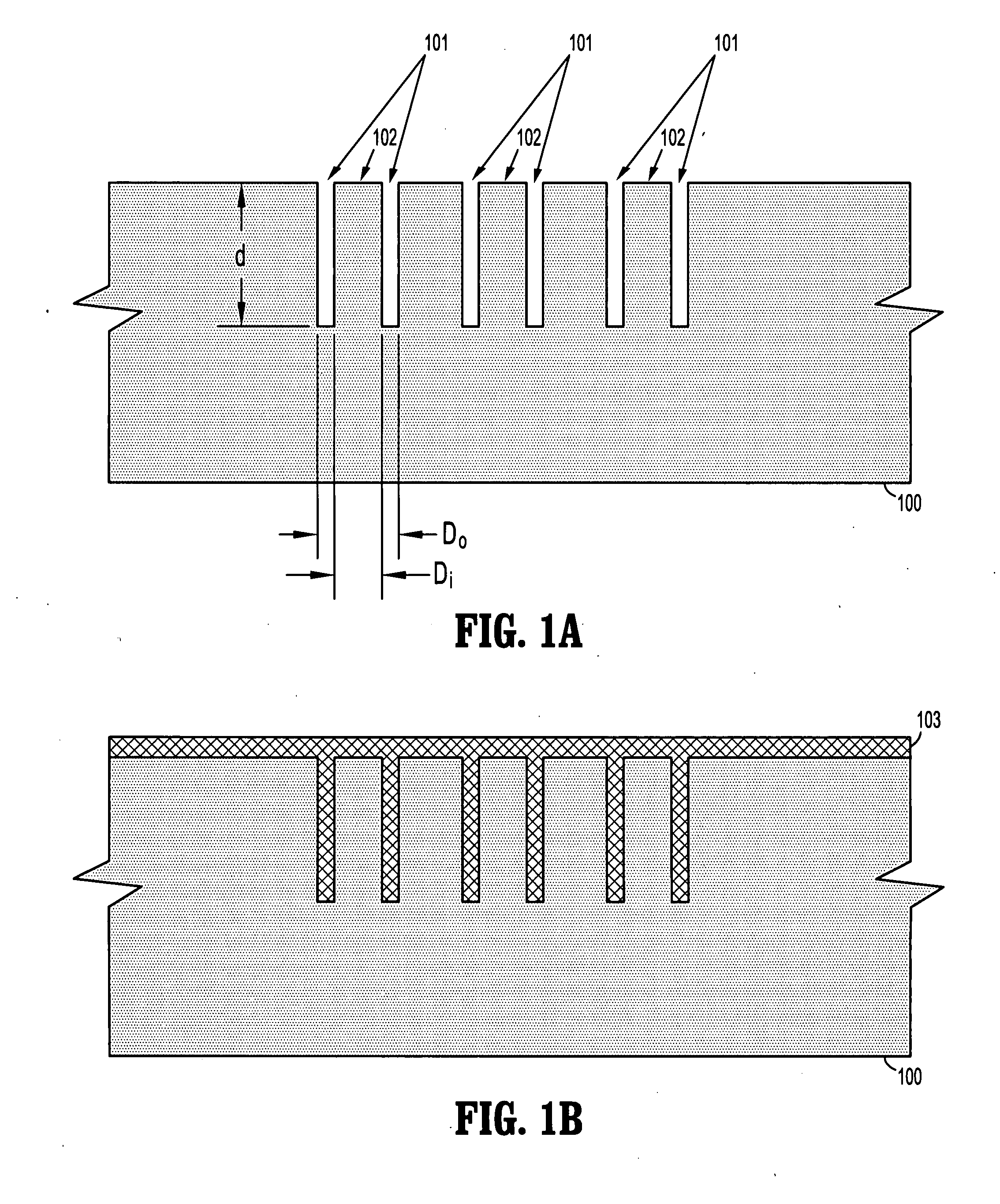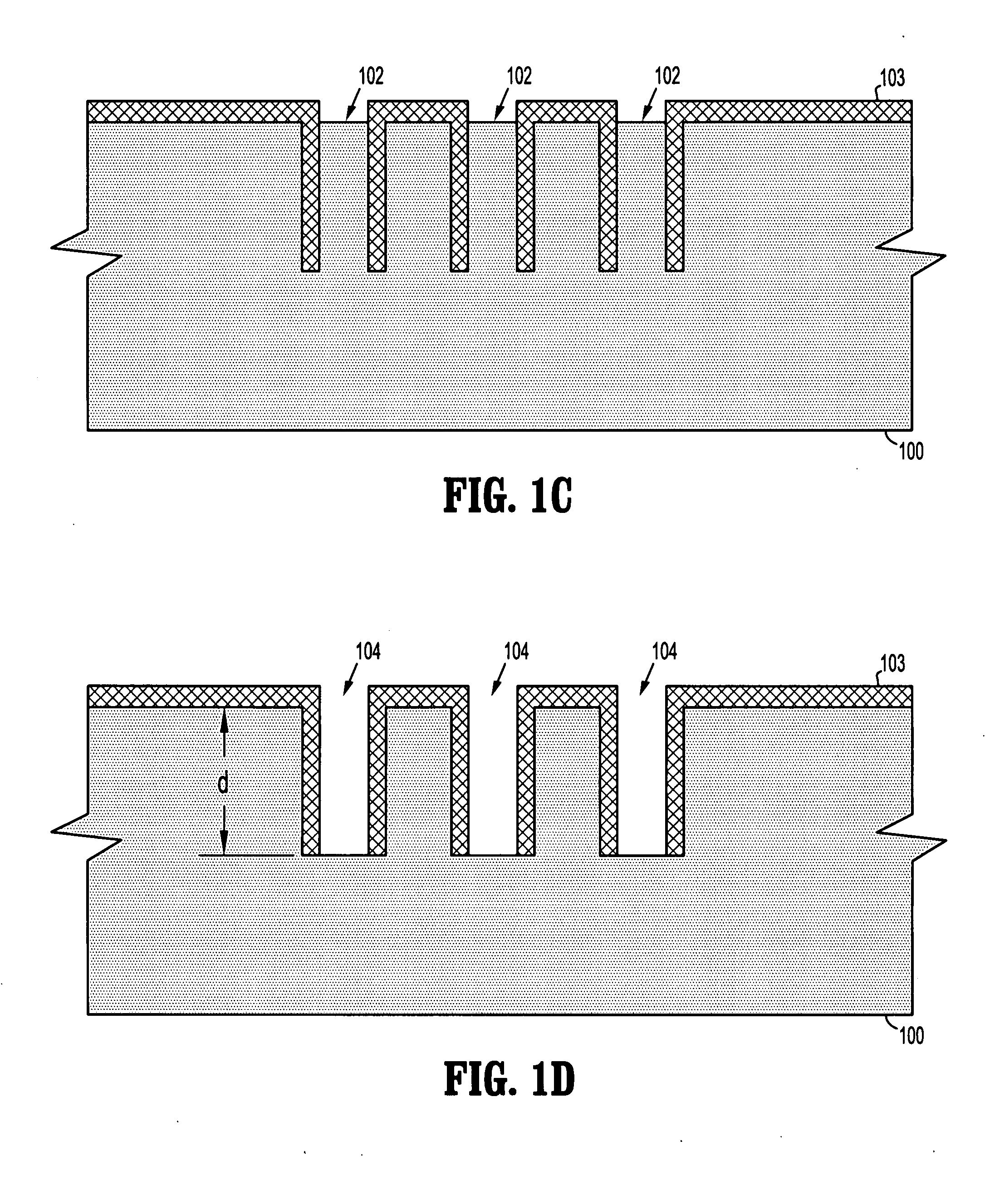Methods for fabricating silicon carriers with conductive through-vias with low stress and low defect density
a technology of conductive through-vias and silicon carriers, which is applied in the direction of semiconductor devices, semiconductor/solid-state device details, electrical apparatus, etc., can solve the problems of high fabrication cost, inability or desire to use carrier technologies, and inability to achieve practical integration or chip-level integration. , to achieve the effect of low stress, high yield and high density
- Summary
- Abstract
- Description
- Claims
- Application Information
AI Technical Summary
Benefits of technology
Problems solved by technology
Method used
Image
Examples
Embodiment Construction
[0033]Exemplary embodiments of the invention will now be described more fully with reference to the accompanying drawings in which it is to be understood that the thickness and dimensions of the layers and regions are exaggerated for clarity. It is to be further understood that when a layer is described as being “on” or “over” another layer or substrate, such layer may be directly on the other layer or substrate, or intervening layers may also be present. Moreover, similar reference numerals used throughout the drawings denote elements having the same or similar functions.
[0034]FIG. 7 is a schematic side-view of an electronic package (10) having a silicon carrier with conductive through-vias fabricated using one of various exemplary methods described herein. The electronic package (10) generally comprises an SOP (system on package) module (20) electrically and mechanically mounted to an electric circuit board (30). The SOP module (20) generally comprises a chip-level package (40) an...
PUM
 Login to View More
Login to View More Abstract
Description
Claims
Application Information
 Login to View More
Login to View More - R&D
- Intellectual Property
- Life Sciences
- Materials
- Tech Scout
- Unparalleled Data Quality
- Higher Quality Content
- 60% Fewer Hallucinations
Browse by: Latest US Patents, China's latest patents, Technical Efficacy Thesaurus, Application Domain, Technology Topic, Popular Technical Reports.
© 2025 PatSnap. All rights reserved.Legal|Privacy policy|Modern Slavery Act Transparency Statement|Sitemap|About US| Contact US: help@patsnap.com



